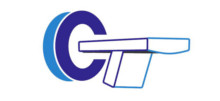News & Events
Industry
“The CT Meeting” Announced July 22, 2015
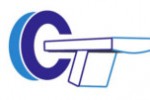
The 4th International Conference on Image Formation in X-Ray Computed Tomography (“The CT Meeting”) will be held July 18 – 22, 2016 in Bamberg, Germany. A call for participants and submissions has been issued by the organizing committee for this event which is “dedicated to basic problems related to X-ray CT.” Abstract Submissions by authors wishing to participate have a deadline of January 18, 2016. Interested parties should visit http://www.ct-meeting.org to find more information about the event and submission process.
ALERT Collaborators, Carl Crawford and Harry Martz will be coordinating a session on Security CT Applications. Any ALERT researchers who are interested in participating, or have questions about this session should contact Carl Crawford at [email protected].
TESSA02 Workshop Announced July 1, 2015

ALERT is pleased to announce it will be hosting the Second “Trace Explosives Sampling for Security Applications” (TESSA02) Workshop, which will be held on August 5th, 2015 at Northeastern University in Boston, MA. The title of the workshop will be “Fundamentals and Advances in Trace Sampling and Detection.” The TESSA02 Workshop, held in 2014, was the first in the series to deal with the development of a roadmap for understanding contact sampling for trace explosives detection. The topic of contact sampling was chosen for the workshop in order to support the Department of Homeland Security’s (DHS) objective of improving the performance of existing technologies.
For more information, visit the TESSA02 Workshop event page here!
ALERT Continues to Foster Collaboration at ADSA12 Workshop July 1, 2015
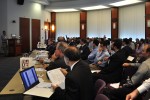
On May 12-13, 2015, the Twelfth Advanced Development for Security Applications Workshop (ADSA12) was held at Northeastern University in Boston, MA. The workshop focus was, “Screening of Personnel and Divested Items at the Checkpoint,” and was a continuation of the first workshop, ADSA01. The topic was chosen in order to support the Department of Homeland Security’s (DHS) objective of improving the performance of existing technologies and to improve the passenger experience at checkpoints. Another goal of the workshop was to support DHS’s objective to increase the participation of third parties, such as researchers from academia, national labs, and industry other than the incumbent vendors, in algorithm and system development for security applications.
The following topics were addressed at the workshop: emerging hardware; emerging algorithms and processes; improving the passenger experience and assessing and using risk. The topics were addressed from the perspectives of the TSA, airlines, and passengers.
The key findings from the workshop on what can be done to solve the checkpoint problems are: use of risk based screening including under-screening; improved concept of operations; integrating systems and data; setting standards for systems interfacing, data integration and testing in lab and field; developing better hardware and reconstruction software and identifying orthogonal technologies.
The next workshop, ADSA13, is scheduled for the fall of 2015, will be a continuation of ADSA12 and will concentrate on the following topics: trace and standoff detection; video analytics; application to mass transit and federal buildings; fusing orthogonal technologies; explosive threats; networking; laboratory and red-team testing; third party development of Automated Threat Recognition and reconstruction algorithms; machine learning; prevalence shifting; (trading off Probability of Detection for Probability of False Alarm); concept of operations; measuring and using risk; deterrence; and case studies.
Naval Academy Midshipmen Participate in ALERT Research July 1, 2015
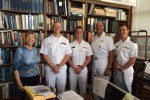
Annapolis Naval Academy Midshipmen, Andrew Kelly and Gabe Lackey, are spending a month this summer doing ALERT research at the University of Rhode Island (URI), in Kingston, RI. Andrew and Gabe are Systems Engineering majors and have elected to use this time to work with the URI Energetic Materials Research Group. Their work includes hands-on experience with a myriad of aspects of explosives research at both the laboratory scale and in the field. Projects include using various instruments for physical characterization of both military explosives and homemade/improvised energetic materials.
Midshipman Lackey (pictured, middle) has said of his experiences,
“It has been very interesting to see the ‘behind the scenes’ process that takes an idea and eventually lets it reach the front lines, helping sailors, marines, and all military men and women.”
Midshipman Kelly (pictured, far right) says of his experiences working with ALERT scientists at URI,
“Working alongside the graduate students under Dr. Oxley has been informative in linking the numerous research areas to future military application, as well as what is currently being used.”
ADSA12 Presentations Now Available June 10, 2015
We are pleased to announce that the ADSA12 Workshop presentations are now available for download at the following link:
https://alert.northeastern.edu/transitioning-technology/adsa/final-reports-and-presentations/
If you have any questions regarding the topics and technologies discussed at the workshop, please contact Carl Crawford at [email protected].
Borja Gonzalez and Prof. Carey Rappaport, win the Best Antenna Design and Application Paper Award at EuCAP 2015 April 29, 2015

Congratulations to our ALERT researchers, Borja Gonzalez (PostDoc) and Prof. Carey Rappaport, who won the Best Antenna Design and Application Paper Award at the EuCAP 2015 – the 9th European Conference on Antennas and Propagation. Their paper, “Multistatic Nearfield Imaging Radar for Portal Security Systems Using a High Gain Toroidal Reflector Antenna,” was presented by Prof. Rappaport at the conference, held this year in Lisbon, Portugal on April 12th – 17th. Selected from over 1,000+ papers presented throughout the conference, ALERT proudly congratulates Carey and Borja on this impressive achievement.
ALERT leads Tutorial at IEEE Symposium on Technologies for Homeland Security April 16, 2015

ALERT led one of two tutorials given at the 2015 IEEE Symposium on Technologies for Homeland Security on April 14th, 2015. The tutorials launched a three day event which included a plenary talk by Dr. Reginald Brothers, the Under Secretary of Homeland Security for Science and Technology, and four research tracks focused on key homeland security topics:
- Cyber Security,
- Attack and Disaster Preparation, Recovery, and Response,
- Land and Maritime Border Security
- Biometrics & Forensics.
The tutorial provided an introduction to explosive threat sensing technologies to over 25 representatives from educational institutions, national labs, DHS, and members of the private security industry.
ALERT Director, Prof. Michael Silevitch began the session by providing an overview of ALERT’s mission, research areas, industrial partnerships, and current technology transition efforts. After a brief Q&A, Jim Smith from the University of Rhode Island discussed how chemicals are classified as explosives and methods of trace detection. Dr. Smith presented what explosives tend to be found in improvised explosive devices and URI’s work in improving the detection of these types of materials. ALERT’s work in vapor detection, explosive residue detection, and canine explosive detection were all discussed.
For the second half of the tutorial, Prof. Octavia Camps presented techniques used within the video analytics domain to detect features, descriptors and invariants (fixed components) in video. She then discussed the process of inference used to classify video data. All of these components are in play in ALERT’s video analytic work. Octavia reviewed the VAST project, a collaboration with Siemens, the TSA and Cleveland Hopkins International Airport, by discussing the project’s contraflow (in-the-exit) and tracking in a crowded scene (tag and track) components. Prof. Camps also discussed ALERT’s partnership with VACCINE and the GCRTA to improve detection of known criminals within the rail system through video re-identification.
Carl Crawford closed the session with a presentation on X-ray based and millimeter wave detection technologies. After discussing the history of threats to air travel and current scanning processes, Dr. Crawford covered how false alarm rates are a substantial barrier to current technologies and what ALERT and its partners are doing to lessen its impact. ALERT technologies including detection diffraction systems, real time tomography systems, and active millimeter wave systems were presented by Dr. Crawford. ALERT’s work with third parties such as national labs, DHS security vendors and other academic intuitions to improve scanning rates and generate non-SSI research datasets were also highlighted.
The diverse audience engaged with center representatives regarding current ALERT partnerships, available research datasets, and in the field research projects. The tutorial included a productive discussion on the barriers of transitioning technology and opportunities for future collaborations in the tutorial’s domain. ALERT looks forward to continuing to support the Homeland Security Enterprise through events such as the IEEE Symposium.
COE students & industry partners network, make connections at 2015 ASPIRE April 10, 2015
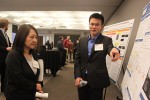
Held on April 7, 2015, the fourth Annual Student Pipeline Industry Roundtable Event, otherwise known as ASPIRE, successfully brought together two of ALERT’s key components, industrial partners and students of all levels currently involved in center research, as a means of continuing to build strong collaborations and provide networking opportunities. This year’s ASPIRE took place at Northeastern University and included students from six academic partner institutions and representatives from nine industrial collaborators. The 2015 ASPIRE was also the first to feature representation from a government agency, the Transportation Security Laboratory (TSL).
Borne out of a more than fifteen-year-long tradition that ALERT and its predecessor, the Bernard M. Gordon Center for Subsurface Sensing and Imaging Systems, has of close collaboration with industry members, ASPIRE’s mission is for industrial partners to introduce their companies, products and needs to one another, to our faculty and to our diverse student population. ASPIRE aligns with the Center’s ongoing efforts to create robust partnerships within our industrial base, while also giving students the opportunity to network as they transition through academia and into the Homeland Security Enterprise.
The 2015 ASPIRE was once again curated by the Center Industrial and Government Liaison Officer, Emel Bulat. Center Director, Michael Silevitch was on-hand to launch the event and welcome the attendees. Industry members gave 8-minute presentations, followed by 2-minute presentations made by students. ASPIRE was able to expand student participation this year through virtual presentations made by individuals that could not travel to Boston. In the afternoon, students, faculty and industry met face-to-face during a three-hour networking session. The session activities included poster presentations by students, 10-minute roundtable “get-to-know-you” discussions amongst attendees and a closing reception.
It is our hope that connections made at events, such as ASPIRE, will continue to foster alliances within the COE between students, faculty, government and industry. We expect that such collaborations will produce responses to market opportunities, including government solicitations such as Broad Agency Announcements and Request for Proposals, and eventually result in effective technology transfer.
Prof. Octavia Camps and Prof. Richard Radke, Presented at the Eighth ACM/IEEE International Conference on Distributed Smart Cameras December 4, 2014

ALERT researchers, Prof. Octavia Camps, Northeastern University, and Prof. Richard Radke, Rensselaer Polytechnic Institute, presented their team’s ALERT research at the 8th ACM/IEEE International Conference on Distributed Smart Cameras (ICDSC). Prof. Camps gave a keynote address, titled, “Structured Robust PCA and Dynamics-Based Invariants for Multi-Camera Video Understanding,” and Prof. Radke presented his talk, titled, “Real-World Re-Identification in an Airport Camera Network.” The conference was held on November 4th – 7th, in Venice, Italy.
ALERT Hosted the Eleventh Workshop on Advanced Development for Security Applications (ADSA11) November 10, 2014
ALERT hosted it’s eleventh ADSA Workshop last week on November 4th and 5th, at Northeastern University in Boston, MA. This workshop, titled, “Explosives Detection in Air Cargo – Part II,” was a continuation of the previous ADSA10 workshop focus, and was attended by over 150 representatives from government, academia, and industry. Following the workshop, ALERT invited participants to attend the ATR Development for CT-Based EDS (Task Order 4) Program Review, on November 6th, 2014. The ADSA12 workshop is tentatively planned for the spring of 2015. For more information on these events, please contact [email protected].
Read More
